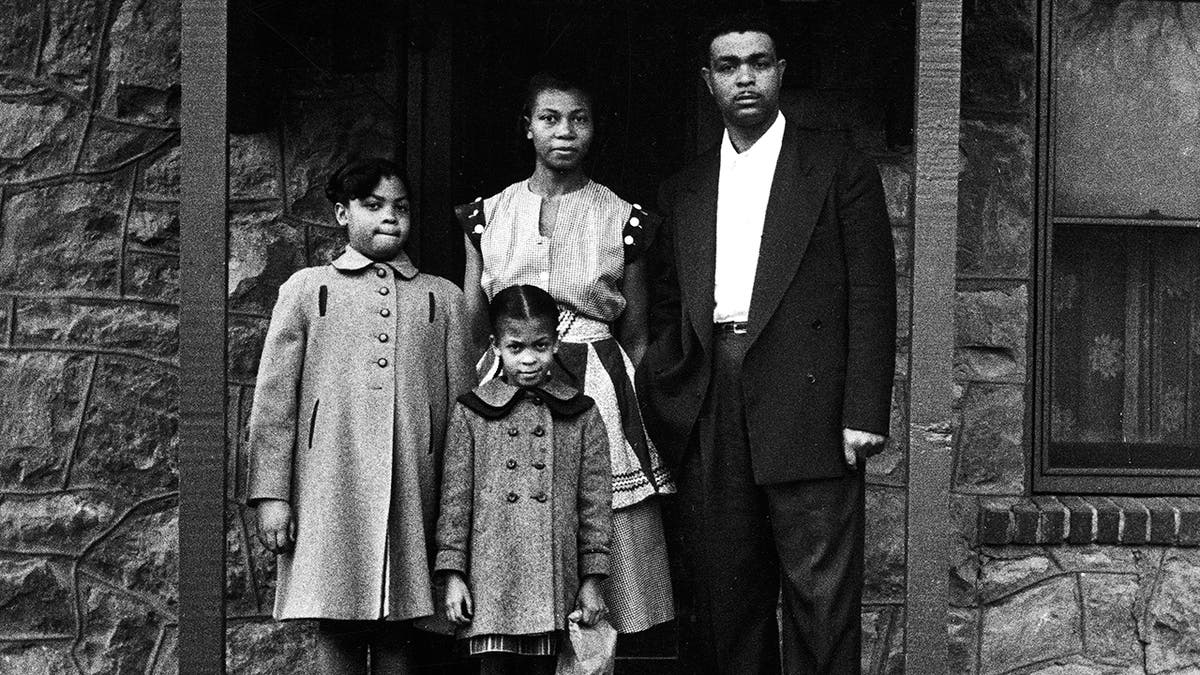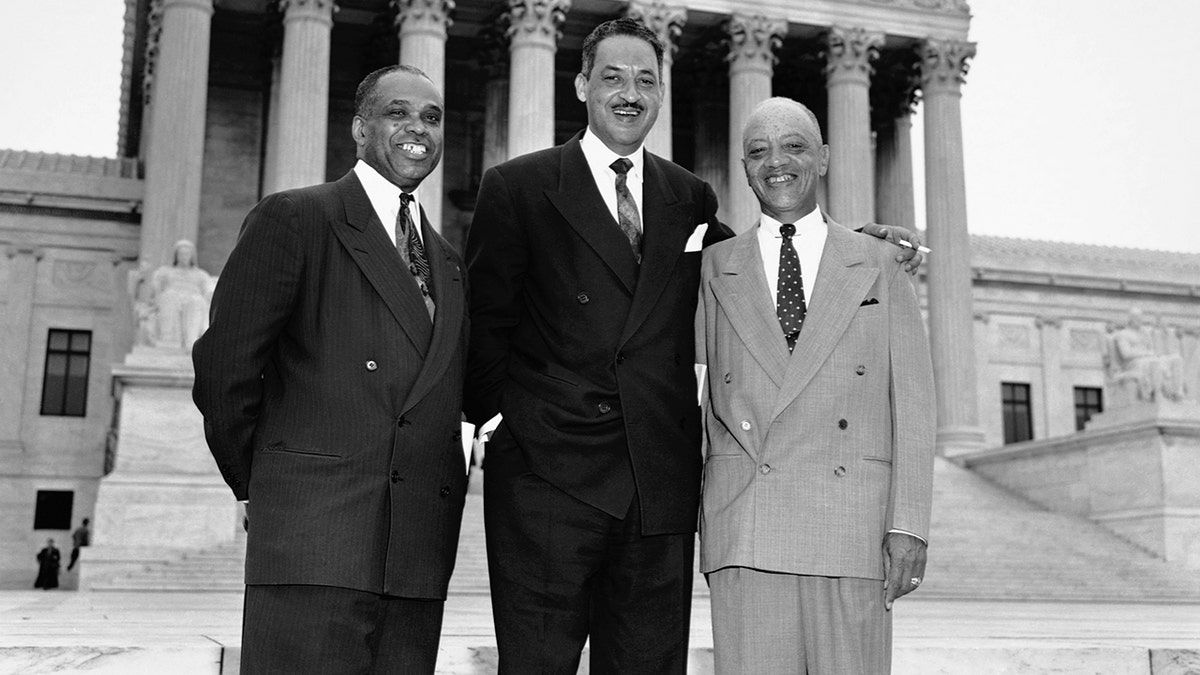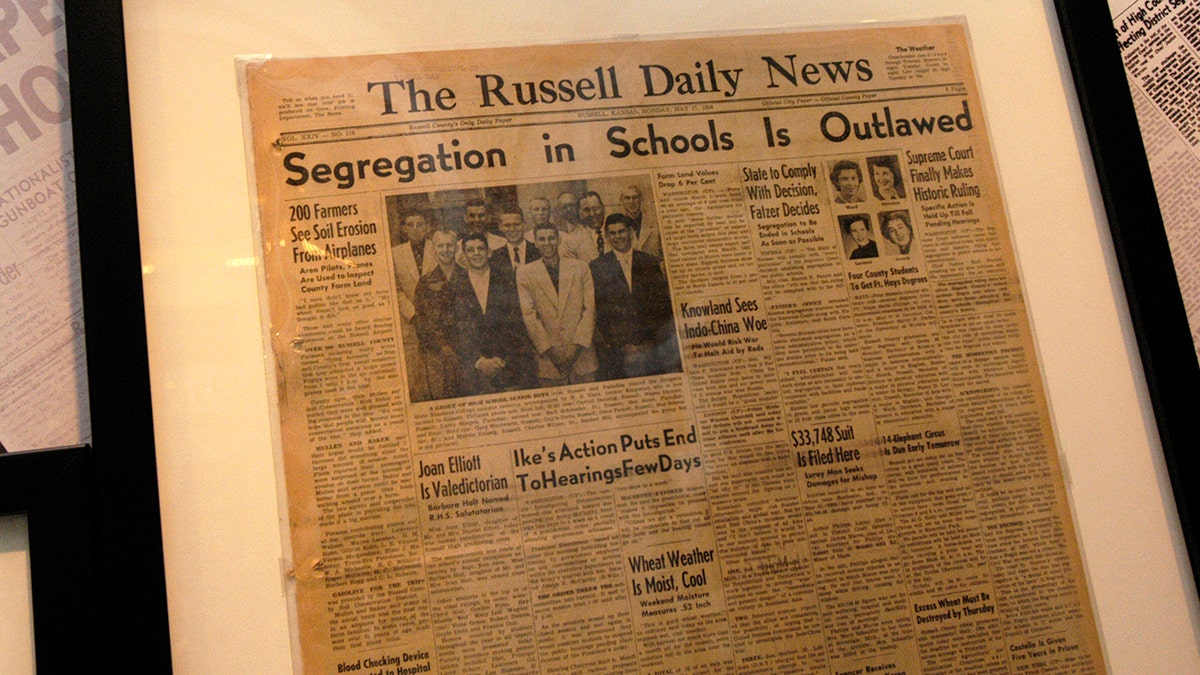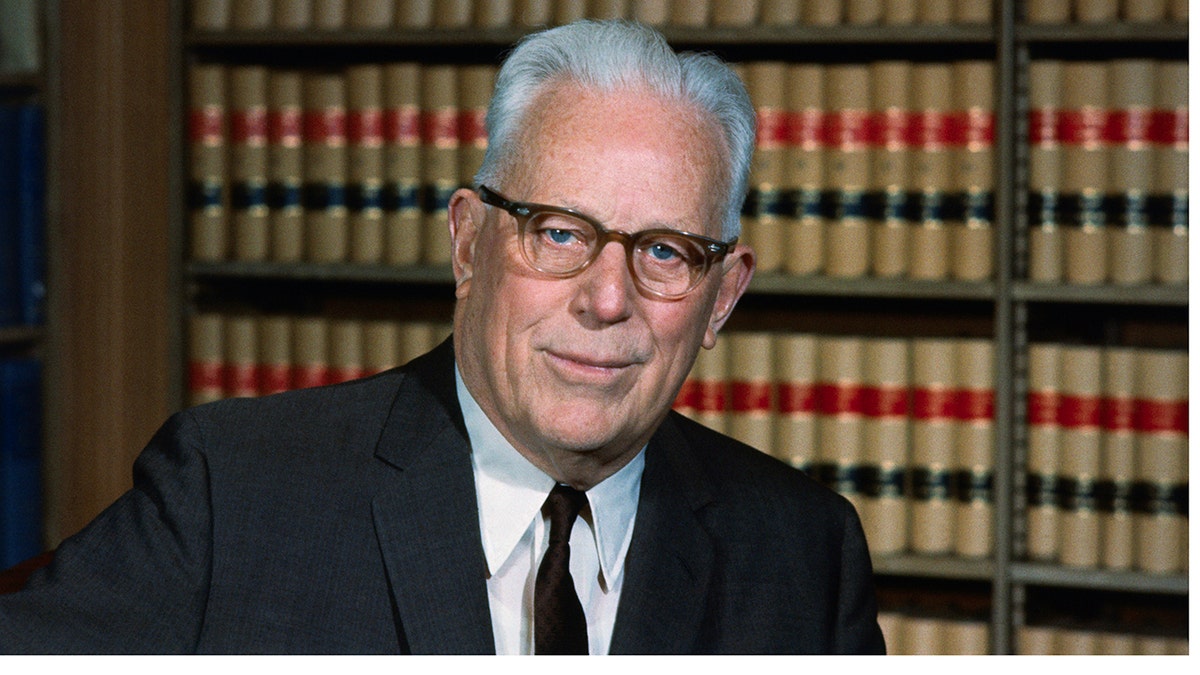Fox Nation special examines life and legacy of Justice Thurgood Marshall
Former clerk for Justice Thurgood Marshall discusses the legendary judge’s life and legacy and the Fox Nation show highlighting Marshall’s accomplishments.
Racial segregation in public schools and the controversial concept of "separate but equal" were unanimously declared unconstitutional by the United States Supreme Court on this day in history, May 17, 1954.
The high court ruled 9-0 in favor of the plaintiffs in the landmark case of Brown v. the Board of Education of Topeka, Kansas.
"May 17, 1954, was a great day — many would say the greatest day — in the history of that institution," then-Supreme Court Justice Stephen Breyer said in Topeka in 2004, celebrating the 50th anniversary of the decision.
"Before May 17, 1954, the Court read the Constitution's words ‘equal protection of the laws,’ as if they protected only the members of the majority race. After May 17, 1954, it read those words as the post-Civil War Framers meant them, as offering the same protection to citizens of every race."
The case pitted lead plaintiff Oliver Brown against the Topeka school board.

Linda Brown (far left) with parents Leola and Oliver and little sister Terry in front of their house in Kansas. The Browns sued the Kansas Board of Education when young Linda wasn't allowed to go to an unsegregated school. They won the landmark Brown v. Board of Education case before the Supreme Court in 1954. (Carl Iwasaki/Getty Images)
The African American father, supported by other parents and the local chapter of the NAACP, filed suit after his daughter, Linda, was denied attendance at the school closest to their home.
"In the field of public education, the doctrine of ‘separate but equal’ has no place."
"Though the ruling applied only to public schools, Brown v. Board of Education set an important legal precedent and paved the way for further battles against segregation," wrote The Gilder Lehrman Institute of American History.
The decision overturned the 1896 Supreme Court ruling in Plessy v. Ferguson that permitted separate but equal public facilities.
That decision allowed local laws that divided schools, restaurants, public bathrooms and other facilities by skin color.

Attorneys who argued the case against segregation stand together smiling in front of the Supreme Court building on May 17, 1954, after the high court ruled that segregation in public schools was unconstitutional. Left to right, George E.C. Hayes, Washington, D.C.; Thurgood Marshall, special counsel for the NAACP; and James Nabrit Jr., professor and attorney at law at Howard University in Washington, D.C. (Getty Images)
The Brown v. Board ruling, among many other outcomes, marked a triumph for attorney Thurgood Marshall, chief legal counsel for the NAACP.
"The only thing can be is an inherent determination that the people who were formerly in slavery, regardless of anything else, shall be kept as near that stage as is possible," Marshall said before the high court, arguing that "separate but equal" segregation flouted the rights guaranteed by the 14th Amendment.
"Now is the time, we submit, that this Court should make it clear that that is not what our Constitution stands for."

Newspapers with articles about Brown v. Board of Education, part of an exhibit at the Library of Congress, "With an Even Hand," on the 50th anniversary of the landmark Supreme Court decision on integration. (Chris Maddaloni/Roll Call/Getty Images)
Marshall rode the success of his Brown v. Board arguments all the way to a position on the top court himself.
"After Brown, Marshall argued many more court cases in support of civil rights," states U.S. Courts.gov, published by the federal Administrative Office of the U.S. Courts.
"After Brown, Thurgood Marshall argued many more court cases in support of civil rights."
"His zeal for ensuring the rights of all citizens regardless of race caught the attention of President John F. Kennedy, who appointed him to the U.S. Court of Appeals."
Marshall became solicitor general of the United States in 1965 before being appointed the first African American to sit on the Supreme Court by President Lyndon Johnson in 1967.
He served in that position until 1991.
Marshall died in 1993 and is buried at Arlington National Cemetery in Virginia, celebrated as one of the greatest figures in the nation's legal history.
ON THIS DAY IN HISTORY, FEB. 1, 1790, UNITED STATES SUPREME COURT ASSEMBLES FOR FIRST TIME IN NYC
Brown v. Board settled the issue of public-school segregation in the eyes of the high court. But the battle was fought in local communities for years to come.
Arkansas Democrat Gov. Orval Faubus infamously ordered the state National Guard to surround Central High School in Little Rock to keep nine black students from attending in 1957.
President Dwight Eisenhower responded by sending the 101st Airborne of the U.S. Army to Little Rock to ensure the Supreme Court decision against school segregation was upheld.
CLICK HERE TO SIGN UP FOR OUR LIFESTYLE NEWSLETTER
Alabama Gov. George Wallace infamously made a "stand in the schoolhouse door" at the University of Alabama in 1963 to express his opposition to desegregation of the public institution, though the school had been integrated seven years earlier.
Wallace then sought the Democrat nomination for president three times, in 1964, 1972 and 1976, and as an independent candidate in 1968, running on a segregationist platform.

Supreme Court Chief Justice Earl Warren oversaw the high court's 9-0 decision in the 1954 Brown v. Board of Education case, which declared segregation in public schools unconstitutional. (Getty Images)
School segregation remains a challenge in society today, both because of economic and social factors — and because of a recent movement to re-segregate education in the name of social justice.
"School segregation has increased in the last 30 years, especially in the 100 largest districts that enroll about 40% of the nation’s K-12 population," Education Week noted in an online report two years ago.
Major institutions such as Harvard University and the University of Chicago have held segregated graduation ceremonies, while some educators push for segregated classes, housing and programs in higher education.
A recent article in The New England Journal of Medicine argued on behalf of segregated medical schools.
These efforts "deserve to be denounced," activist Kenny Xu told "Fox & Friends" last year.
Despite recent trends, the 1954 Supreme Court ruling in Brown v. Board of Education declaring racial segregation unconstitutional remains the law of the land.
CLICK HERE TO GET THE FOX NEWS APP
"In the field of public education, the doctrine of ‘separate but equal’ has no place," said Chief Justice Earl Warren, explaining the unanimous Supreme Court decision.
"Separate educational facilities are inherently unequal."
For more Lifestyle articles, visit www.foxnews.com/lifestyle.

